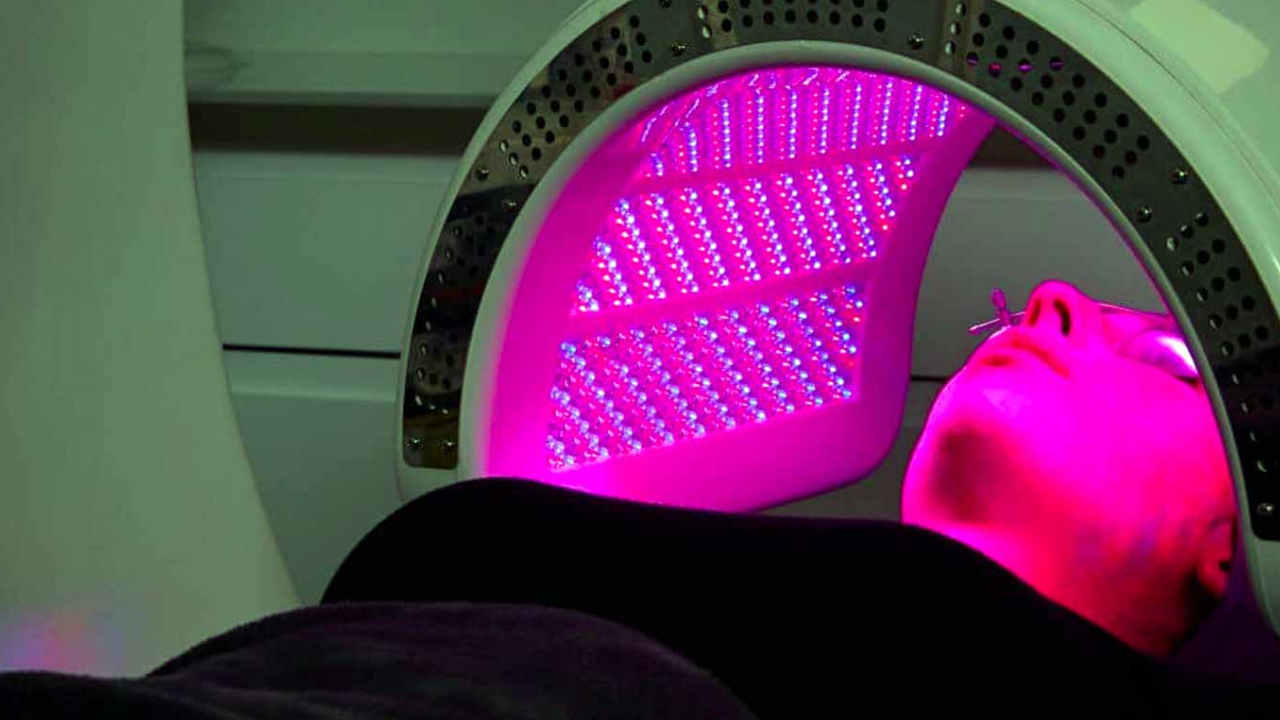Red light therapy is not an intrusive treatment that uses red or near-infrared light to enhance healing and boost cellular activity. It is sometimes called low-powered laser treatment (LLLT) or photobiomodulation. Low levels of light, usually between 630 and 670 nanometers, are applied to the skin and underlying tissues for the therapy to take effect.
Red light treatment is useful for several things, such as pain relief, skin renewal, and wound healing. To learn more about hair treatment must visit our website. It is thought to support hair development by stimulating dormant hair follicles, controlling hormone levels, and extending the hair growth phase, providing a potential remedy for hair loss.
Is Red Light Therapy Effective For Hair Loss Due to Hormonal Imbalances?
Red light treatment has demonstrated potential in treating hormonally-related hair loss. Red light therapy has the potential to slow down or even cure hair loss by modifying hormone levels, namely by lowering dihydrotestosterone (DHT), a hormone associated with both male and female pattern baldness.
The therapy may be a viable non-invasive option for people who are experiencing hair loss from hormonal imbalances because of its power to affect hormonal parameters, boost cellular activity, improve blood circulation, and have anti-inflammatory effects. Individual reactions might differ, though, and more study is required to develop standardized procedures for this particular application.
Red Light Therapy Works for Hair Growth
We examine the workings and underlying scientific theories of Red light treatment’s ability to promote hair growth.
Cellular Energy Generation
Red light treatment’s capacity to increase cellular energy generation lies at the heart of its effects on hair growth. Often called the “powerhouse of the cell,” the mitochondria are essential for producing adenosine triphosphate (ATP), the main energy source for cells. Red light, especially that which falls between 630 and 670 nanometers, is absorbed by mitochondrial chromophores, which sets off a chain of events that eventually boost ATP synthesis.
Enhanced Blood Circulation
It has been demonstrated that red light treatment improves blood circulation in the areas that it treats. By guaranteeing a better supply of oxygen, nutrients, and growth elements for hair follicles, this increase in blood flow can significantly benefit them. Enhancing circulation additionally facilitates the elimination of waste materials, fostering a more salubrious milieu for hair follicle proliferation.
Anti-Inflammatory Effects
It is known that chronic inflammation has a role in hair loss. Red light treatment has been shown to have anti-inflammatory qualities, which can aid in lowering scalp inflammation. Red light treatment may improve the environment for hair growth by reducing inflammatory responses. This will enable follicles to perform at their best and stop the advancement of disorders such as androgenetic alopecia.
Stimulation of Stem Cells
Hair follicle-resident stem cells are essential for hair regrowth. According to studies, red light therapy may stimulate these stem cells and encourage the growth of new hair cells. This activation could be connected to the production of specific growth factors and signaling molecules triggered by photobiomodulation, which sets off a series of processes that revitalize weak or dormant hair follicles.
Regulation of Hormones
Hair loss is frequently linked to hormonal imbalances, particularly those involving androgens. Dihydrotestosterone (DHT), a hormone connected to both male and female pattern baldness, is less concentrated when using Red light treatment, according to theories about how hormone levels are affected. Red light therapy has the potential to mitigate or even reverse hormonally-related hair loss by regulating hormone levels.
Extension of the Anagen Phase
The three stages of the hair growth cycle are Anagen (growing), Catena (transitional), and Telogen (resting). Anagen phase extension the time when hair grows actively has been linked to red light therapy. Red light therapy increases the density and thickness of hair by prolonging the growth phase and promoting the formation of new hair shafts.
Conclusion
Red light therapy, sometimes referred to as photobiomodulation or Low-Level Laser Therapy (LLLT), is a non-invasive therapeutic approach that stimulates cellular function and promotes healing. It makes use of either infrared or red light. The therapy works by exposing the skin and underlying tissues to low-intensity light. When mitochondrial chromophores absorb this light, a cascade of physiological processes is triggered, leading to increased synthesis of adenosine triphosphate (ATP) and improved blood circulation.
